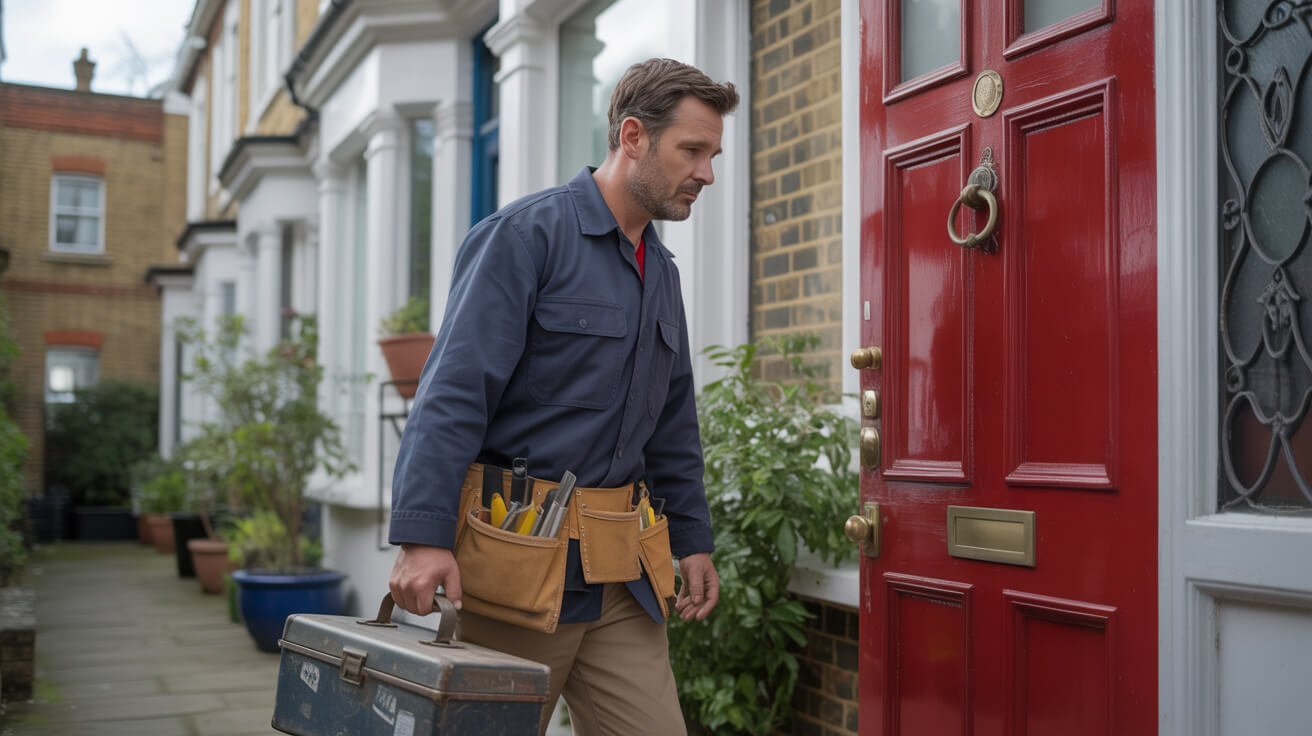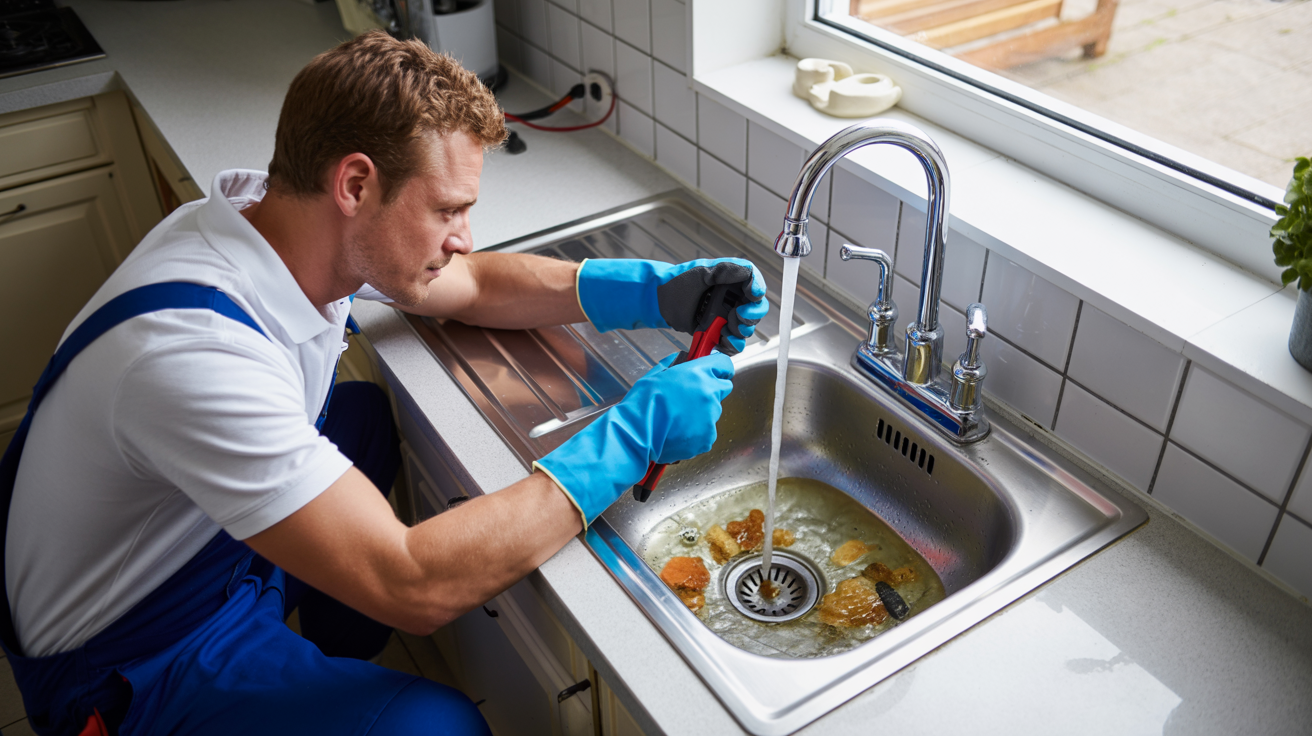 New Build Boiler Problems Common Issues in First 5 Years
New Build Boiler Problems Common Issues in First 5 Years

Why Even a Brand-New Boiler Isn’t “Set-and-Forget”: What Every Smart Owner Should Know
A brand-new build feels like a fortress. The boiler’s gleaming, the heating clicks on without fuss, and the manufacturer promises “worry-free warmth” for years ahead. Here’s the problem: too many homeowners, landlords, letting agents, and commercial property managers see their new boiler as a 10-year passport to peace of mind, never glancing at the paperwork or setting foot near the logbook again. That sense of security? It’s a house of cards if you don’t back it up with routines, records, and regular care.
Boiler disasters usually trace back to missed checks or absent documents, not failing valves or worn-out parts.
There’s a trap here, and it catches everyone from the rookie homeowner to long-time professionals managing portfolios: the “set-and-forget” myth. modern boilers need a strict sequence—timely annual services, tidy documentation, and attention to the signals that something’s off. Miss one link? That cast-iron warranty, the chance for an insurance payout, and even your compliance standing can vanish overnight. If it isn’t logged, signed off, and maintained, it may as well not exist when you need it most.
This is about more than ticking a box for Gas Safe, G3, WRAS, or the latest insurance requirements. It’s about protecting your finances, your asset value, and your brand’s reputation—because when standards slip, trust crumbles. Whether you’re a landlord hoping for smooth turnovers, a letting agent juggling multiple tenants, or a building manager tasked with maintaining dozens of boilers across a portfolio, ignoring the details shifts all the risk onto your shoulders.
Your real safety net? Relentless, recorded routine—every annual, every logbook entry, every compliance check, every single year.
Are New Build Boilers Really Trouble-Free? Debunking the Five-Year Illusion

Crack open the casing on nearly any boiler in a “brand new” property and you’ll find something that looks pristine. The stats, labels, and shiny warranty card seem to promise five worry-free years. Yet, beneath this facade, common issues are already percolating. Studies reveal one in six new installations suffers a significant fault within their first five years—most often internal leaks, temperamental controls, or heating that’s just never right (Forbes 2024).
Rushed Builds and Hidden Flaws
Construction doesn’t slow down for compliance. In too many new builds, the push to finish on time means pipework gets flushed too fast or joints aren’t soldered with care. App-based thermostats can be left half-configured, and essential system cleans—or even pressure tests—are skipped.
- If you’re constantly “re-topping” pressure within the first year, that’s not standard settling.
- Poor zonal heating, erratic smart controls, or lukewarm radiators often point to deeper issues—potentially flawed initial installation rather than “just a snag.”
These silent problems rarely spark an error code on day one. Instead, they lodge themselves in your system, only to surface months later as cold rooms, mounting energy bills, or “mystery” leaks that no one can find.
The Accreditation Factor: Where Handover Leaves You Exposed
A proper instal is meant to be bulletproof. The manufacturer expects a Gas Safe certificate filed, the G3 sign-off for cylinders, and a fully completed benchmark log in the homeowner’s file. But all too often, new builds pass through hurried site sign-offs, missing schematics, or absent service stamps.
Compliant doesn’t mean protected unless every certificate, log entry, and installer detail is spot-on and on file.
Lose track of that documentation, and even the most robust boiler becomes a liability. Brands will reject claims if you can’t prove your annual service history, and insurers will toss out requests if paperwork has so much as a signature missing or a late entry.
What Hidden Risks Lurk Behind New Build Confidence? The Early Warning Signs You Can’t Ignore

It’s easy to get tricked by the shine of new copper and stainless steel, but lasting security rarely comes from the hardware alone. Most early breakdowns aren’t dramatic—they’re subtle, compounding mistakes: air left in the system, skipped flushes, tiny slow leaks, dodgy pressure readings, or the tell-tale knock of loosely fixed pipework.
Why a Missed Service Can Wreck Your Whole Safety Net
The industry makes big promises—a 5, 7, or even 10-year warranty—but with strings. Miss just one annual service, let your logbook go unsigned, or shortcut the process with an unregistered engineer, and you’ll pay for repairs out of pocket. Boiler brands and insurers most often deny claims due to gaps or unqualified services, even more than due to actual equipment problems (Viessmann 2023).
- Digital logbooks work, if and only if they’re completed by a qualified pro and submitted on time. No “mate from down the road.”
- For landlords, letting agents, and commercial owners, the risk is multiplied: lack of routine costs you in repairs, compliance, and even licence renewal headaches.
What If the Worst Faults Don’t Show at Handover?
The nastiest problems—corrosion in hidden pipes, internal micro-leaks, or shortcuts in wiring—don’t roar into life. They simmer, doing unseen damage until, one winter’s day, you’re staring down a four-figure bill. smart thermostats installed in a hurry can produce erratic reactor signals, wasting money and burning trust with your tenants or facility users.
Ignore a missing service, or skip a benchmark entry? It’s more than a diagnostic gap; it’s a shortcut to trouble for your legal defence and bottom line.
How Do Early Boiler Problems Actually Appear? Spotting Patterns vs. Excuses

Your new build warranty doesn’t include a detective. Patterns repeat, but the industry is slow to admit it: topping up pressure too often, monthly calls about unresponsive heating, persistent air bleeding, or quirky thermostats. By the time you spot a pattern, the system’s already telling you something significant.
The Real Patterns from Year One to Year Five
- Recurring Pressure Loss: – If you have to refill more than once a winter, odds are it’s a leak or airlock, not “commissioning making itself known.” Insurers and brands both note this is the signature sign of hidden installation issues ([HomeServe 2024](https://www.homeserve.co.uk/heating/boiler-help-and-advice/understanding-your-boiler/10-common-boiler-problems/)).
- Smart Control Headaches: – App-based stats, zone valves, or wireless links can misbehave due to poor initial wiring or unfinished programming, especially in rapid multi-unit developments.
- Unseen Damp: – If you feel or smell moisture, even without a visible drip, treat it like an early-warning siren. Wet spots corrode vital boards or create electrical shorts, escalating a simple fix into a full shutdown or claim.
Why “It’ll Settle Down” is Wishful Thinking
In those first post-handover months, industry insiders may brush off repeated issues as “teething,” but the best manufacturers expect silent, consistent operation—not excuses. After two or three repeat complaints, you need a proper operational audit—not more patchwork.
Repeatedly apologising for glitches doesn’t build trust—resolving them before they escalate does.
The Logbook: Your True Lever for Compliance, Claims, and Asset Value

Forget marketing brochures and shiny certificates stuck in a kitchen drawer. The only document that matters when your investment is on the line is your logbook—paper or digital, always kept up to date. For residential, rental, and commercial portfolios, that signed, dated service record is what stands between you and denied claims, voided warranties, or compliance headaches.
The Power of the Benchmark Log
The first entry, logged by the builder or original engineer, is just the start. Going forward, make sure every annual service gets a proper signed, timestamped record—ideally both in the physical benchmark and your own digital copy. When buying, selling, or transferring tenancies, insist on seeing the chain of compliance.
- Brands now accept photo evidence, but only if you gather it before a problem arises.
- Lost paperwork? Limited options for recovery. Proactivity is the only insurance.
Clarity on Who Must Hold What
Builder hands you the keys, and from that instant, it’s your responsibility. Homeowners: you need the CP12 for gas and G3 for unvented hot water. Landlords and agents: annual proof for every rental asset is non-negotiable. Commercial property owners: keep everything accessible for each inspected asset. Slack on this and you’re open to fines, tenants upset mid-winter, and even legal action if a claim is denied or the compliance trail breaks (GOV.uk).
*Show up with a complete logbook, and everyone—buyers, tenants, insurers—takes you seriously. Waver on that, and trust evaporates along with your options.*
What Do the Numbers Prove About the First Five Years? Fault Data from UK New Builds

Put aside the anecdotes—let’s talk about what actually happens in the field. Aggregated fault data from UK new builds shows a consistent pattern: it isn’t poor kit causing the chaos, it’s overlooked routines.
Here’s a summary:
| Fault | % of New Builds (1–5 Years) | Usual Trigger |
|---|---|---|
| Internal Leaks | 17% | Instal error, joint fatigue |
| Pressure Loss | 18% | Hidden leak or air in system |
| Heating Gaps | 15% | Thermostat miswiring/zone faults |
| Hot Water Dropouts | 12% | Programmer, stat, diverter stuck |
| System Noise | 24% | Flushing skipped, debris remains |
| Warranty Denied | 28% of failed claims | Paperwork, missed annual, no log |
Transition: Now, here’s the stinger. Ninety percent of those failures could have been headed off with a professional check at service time. For new builds—where the owner, agent, or managing landlord often expects zero hassle—routine is the only reliable buffer. Set reminders, check paperwork at least quarterly, and actively ask for compliance evidence. It’s not just about being covered when claims hit; it’s about being able to prove, on demand, that every risk is managed proactively.
What’s at Stake When Responsibilities Slip? Who Loses—And How?

Every time a key changes hands—whether from builder to buyer, seller to letting agent, or landlord to tenant—the compliance and service burden shifts. It never disappears. In a dispute, claim, or emergency, the party in possession is responsible for evident proof—service logs, certificates, and compliance records. If you can’t produce it on request, you break the chain and pay the price.
Homeowners: Where “Set-and-Forget” Goes to Die
For private owners, a single lost record can make your insurance void or your warranty evaporate like steam from a kettle. Selling or refinancing without the full boiler service chain invites price drops, buyer reluctance, and post-sale headaches.
Landlords & Property Agents: Your Exposure Multiplies
You don’t just lose insurance—the licencing bodies, local authorities, and tenants can come down hard. Digital app logs are acceptable but only when properly completed, time-stamped, and matched to a registered engineer (Property118).
- Insurers’ most common refusal reason: expired CP12, lapsed logbooks, or inability to instantly prove compliance.
- Hiring “cheap” or non-approved fitters risks the entire property and forfeits all legal protection.
Commercial & Portfolio Owners: Greater Scale, Higher Stakes
Here, every asset must have up-to-the-minute compliance records. Even one missing log in a block of 100 units can hold up emergency repairs, void insurance payouts, or scupper entire transactions.
The baton passes, but the runner never can. You’re always on the hook for the full paper trail.
What Does a Professional Annual Service Actually Involve? No Shortcuts, No Guesswork

If you’ve ever wondered what separates the tick-box service visit from the kind that keeps your boiler, and your legal position, safe, here’s the answer: it’s about process, documentation, and certified expertise.
Step-by-Step: Anatomy of a Qualified Service Visit
- Visual and Mechanical Check: Every join, flue, panel, and visible part is checked and cleaned.
- Pressure and Leak Test: Pipes are tested for correct pressure, all sections checked for leaks.
- Operating and Safety Systems: Every thermostat, timer, and zone valve is cycled and proven to respond correctly.
- Documentation: Engineer completes and signs the benchmark logbook, issues digital or hardcopy certificates, and captures photo evidence if required for future proof ([WaterSafe](https://www.watersafe.org.uk/advice/boilers-service/)).
- Brand and Insurer Sync: Every step is designed to meet both manufacturer and insurer expectations—no shortcuts, no stamp-fudging.
The Cost of Going Cheap: Why Corner-Cutting Services Turn Into Expensive Headaches
“A quick look and a signature” always turns into lost protection. Brands and insurers now demand not only a stamp but timestamped logs, engineer registration, and supporting documentation—sometimes even photos of the work done. Pay less now, and you’ll pay more when coverage is refused, or the first big repair bill lands.
Want genuine peace of mind? Insist on accredited, compliant, and fully-logged service every year. That’s the shortcut to lasting protection.
More Than Warmth: Why Proactive Maintenance Shields Assets, Revenue, and Reputation
Think boiler care is an optional extra, something to let slide until there’s a problem? The numbers disagree. An out-of-warranty part swap on a modern combi can run £700–1,700, sometimes more for PCB faults or failed pumps (TSL Heating 2024). In contrast, annual service fees are low, predictable, and—crucially—they keep every shield in place: warranty, insurance, compliance status, and rapid turnaround for buyers or tenants.
- Leading insurers regularly *deny* perfectly valid repairs if logbooks are missing or digital evidence lacks the right sign-off.
- In a commercial setting, minutes lost chasing documents spiral into days; the cost compounds fast, both in cash outlay and lost business.
- Trust—across tenants, clients, and buyers—collapses quickest when paperwork or response times fail at the moment of crisis.
Sometimes, the most expensive loss isn’t pound notes but reputation: once trust is dented, clients and buyers look elsewhere. Protect your name the way you protect your assets—by never missing an appointment, certificate, or compliance update.
Protect Your Comfort, Investment, and Name with Plumbers 4U
True security in a new build doesn’t come from hope or a stamp on move-in day—it comes from relentless attention to detail year after year. Plumbers 4U doesn’t just send out any engineer; we send fully accredited Gas Safe, WRAS, and G3 specialists who sweat the paperwork, take photo evidence if needed, and log every visit both in your benchmark book and our secure records.
Our difference? We think ahead. From timely service reminders to rapid digital log recovery and step-by-step compliance coaching, we help you prove your diligence to insurers, authorities, and buyers. Faced with a property transfer, new tenant, or overdue compliance deadline? We’re in your corner from first call to signed-off certificate, so you never swing in the wind when someone demands proof.
The engineer was transparent from start to finish—explained every reading, signed every log, and helped get missing paperwork sorted within 24 hours. It kept our deal on track, and I wouldn’t trust anyone else.
Book your annual new build service today. Choose the team that makes compliance simple, care visible, and every asset safer—Plumbers 4U.
Frequently Asked Questions
Why do boilers in new build properties develop unexpected problems so soon?
Even brand new boilers in recently completed properties can suffer faults long before you’d ever expect—most often because handover steps are missed under construction pressure, not because of manufacturing errors. Lax or incomplete commissioning and rushed multi-trade sign-offs create the perfect storm for hidden airlocks, dud wiring, and paperwork black holes. Safe heating isn’t default; it’s earned by sweating the small stuff on day one.
Your boiler’s future health depends on what gets overlooked before the keys change hands, not just which badge is on the casing.
Where does the installation sequence typically break down?
- Overlapping trade schedules: Electricians and plumbers are often working in parallel, and when schedules clash, smart controls or safety disconnects can be left half-finished or wrongly configured.
- Shortcuts under deadline: Essential steps—flushing, pressure-stabilising, inhibitor dosing—get cut or cut short to hit handover targets. This stacks the odds against fault-free performance, leaving weak points for later.
- Logbook limbo: Up to 22% of new UK homes lack complete boiler records at move-in, according to recent building audits. Warranties can dissolve if a single commissioning certificate or emergency contact code is missing.
How can new owners prevent early drama?
- Document everything early: Photos, app screenshots, and stamped certificates need to be captured at every stage—even if you trust your builder.
- Request a commissioning walk-through: Don’t assume “new” means “checked.” Demand a step-through of every setting, safety test, and evidence trail before you even touch the thermostat.
- Keep aftercare proactive, not reactive: Scheduling your first professional audit with Plumbers 4U immediately guarantees that future warranty or support calls aren’t bottlenecked by missing pieces from the start.
Which boiler issues in new builds sneak up on owners unlike those in older homes?
New builds deliver modern comforts and connectivity, yet their most common boiler failures are anything but old-school—they’re direct side effects of today’s tech-forward, deadline-driven construction. Mistakes you’d never see in a period home (with its slower pace and simpler controls) appear when the instal and digital setup are out of rhythm.
What are the standout faults unique to newly built properties?
- Integration headaches: Modern boilers are rarely fitted “naked.” Multi-zone thermostats, wireless valves, smart TRVs—all require cross-trade coordination. A skipped app pairing or missed wiring block means heat in the wrong rooms or cold taps on day one.
- First fix friction: Joints and traps are sometimes sealed before water has run through them, making leaks or blockages more likely when occupants finally arrive.
- Paperless handovers: Older homes have years of user logs and stickers behind panels; new builds often have neither. One missed email or QR code can invalidate a decade of cover.
| How problems differ: new builds vs. old homes | ||
|---|---|---|
| App/zone misconfig | Frequent | Rare |
| Post-handover leaks | Moderate | Normally pre-existing, not new |
| Insulation issues | Higher | Less (upgrades tend to fix) |
| Logbook/serial faults | Frequent | Unlikely (history built-in) |
| Limescale/sludge | Rare | Common, age-related |
| External pipe freeze | Common | Usually caught in retrofits |
Don’t let the shine of a new build distract from the details that matter most for lasting comfort.
Plumbers 4U finishes the bits rushed in the build, updates every log, and walks you through what’s been tested—and what hasn’t. Experience the confidence of a system properly handed over, not just newly installed.
How can you guarantee your new build’s boiler stays trouble-free from the start?
A smooth-running boiler in a new build is never an accident. Your secret advantage is being a step ahead, turning routine checking and documentation into the firewall against faults and budget blowouts.
Start strong with this preventative routine:
- Book your first audit before the first winter: Even with an “all clear,” testing and recording by an accredited expert locks in warranty cover and flags anything that got overlooked in the build rush.
- Keep a digital (and paper) record: Save every receipt, engineer note, serial number photo, and app config as you go. Centralised records are your insurance safety net.
- Monthly 3-minute checks: Look for hidden drips below the boiler, check digital pressure (aim for 1–1.5 bar), and tap each room’s thermostat to ensure every “zone” is genuinely under your command.
- Lag external runs NOW: Ask explicitly about pipe insulation—external pipes need lagging even in mild regions. A £10 fix stops costly breakdowns later.
A stitch in time is more than money saved—it’s the difference between control and chaos.
Landlords and portfolio managers: set automated reminders and keep scanned logs in the cloud. Plumbers 4U offers combi scheduling and digital logbackups so your tenants or clients never get caught in admin limbo. Consider this your shortcut to bulletproof comfort.
What really happens if you skip (or delay) even one boiler service in a new build?
Miss a scheduled service—even by a week—and your boiler’s “unlimited” warranty can vaporise instantly. There’s no grace window in small print for late audits: the clock starts anew and most brands require expensive re-inspection (if they’ll reinstate you at all). The risk: letting one date slip means every future repair could be 100% out of pocket, no arguments.
Why do boiler brands drop cover so aggressively?
- All-or-nothing compliance: Leading manufacturers (Vaillant, Worcester Bosch, Baxi, Ideal, Viessmann) require pinpoint-annual service stamped and registered in their system—and they routinely deny claims for missing just one.
- No DIY or third-party loopholes: Only engineers seen as Gas Safe and featured in the brand’s online directory can certify the work, even if your neighbour is a seasoned pro.
- Restoration, if allowed, is expensive: Annual service resumes may be accepted at the brand’s discretion—but the lapse almost always means uncovered costs for any issues found in the gap.
| Missed service: brand response | ||
|---|---|---|
| Vaillant | Immediate void | No backdating |
| Worcester Bosch | Uncovered until serviced | No guarantee |
| Baxi | Immediate void | Rare reinstatement |
| Ideal | Immediate stop | Strict catch-up cost |
| Viessmann | Instant void | Minimal grace |
There are no favours in a digital logbook—only proof that you’re protected, or simply not.
With Plumbers 4U, your calendar never lets you down, and every metric, log, and expiry date is reviewed as if the audit was tomorrow. Turn one annual call into years of unbroken, claim-worthy protection—no last-minute stress, just constant assurance.
What hidden warning signs let you spot new build boiler faults early—before a breakdown?
A new system that runs hot and quiet on move-in day might still be incubating trouble. The most expensive emergencies always start small: leaks so subtle they don’t show on the floor, pressure dips ignored after a busy week, or “ghost” rooms that never heat fully. You win by catching these signals when they’re whispers, not alarms.
Silent symptoms to watch (so you never get blindsided):
- Pressure inconsistency: If your digital display hovers below 1 bar or creeps downward, it’s an early-fire warning—likely a leak or incomplete system purging at handover.
- Tiny drips, surface rust, or unexplained damp: These always precede bigger failures and signal that pipe joints or shutoffs weren’t fully assessed at instal.
- Temperature swings in single rooms: Erratic or unresponsive radiators, especially in zoned digital setups, point to software hiccups or unaddressed mechanical snags.
- Random error codes or cycling resets: Never ignore blinking lights or strange abbreviations—every code masks a deeper context, from low water to sensor mismatch.
- Any unusual pipe sound, from soft hisses to ticking: These either signal trapped air or improper system balancing, and can be tackled fast if noticed.
When you act on whispers, you prevent shouts—and turn silent malfunctions into bookmarked memories, not breakdowns.
Plumbers 4U engineers catalogue and interpret every finding so that you’re kept in the know, not left hunting for answers. Your best defence is proactive care, and it’s a call or portal tap away.
How is responsibility for new build boiler repairs actually shared among builder, owner, and brand?
Liability is a moving target, and most new owners don’t realise just how quickly the rules—both legal and practical—shift. For the first two years after completion, the builder is on the hook for everything instal-related, from drips to miswiring. After that, the boiler manufacturer takes over, so long as you uphold your part of the bargain: annual services, pristine logs, and no uncertified tweaks.
Key phases of repair responsibility:
- Developer phase (first 24 months): All issues not caused by user misuse, including leaks, faulty wiring, or incomplete controls, come directly from the builder’s aftercare fund. You’re expected to lodge faults fast and keep photographic or certified reports as proof.
- Warranty phase (year three on): Once the builder’s liability expires, the manufacturer’s warranty steps up—but only if every inspection and fix has both a timestamp and a registered engineer log. Miss a service and the buck stops with you.
- Owner/legal duties: Keep rock-solid, dated, and signed records. Never let a DIY friend tackle a system under warranty. As soon as a quirk surfaces, lodge it; silence ties your hands, not the other party’s.
No one cares where the paperwork is until you need rescue—by then, who’s responsible often comes down to what you can actually prove.
With Plumbers 4U as your partner, every responsibility handover becomes frictionless, with auditable logs and certified referrals—even if you have to chase up the builder, escalate to the manufacturer, or defend your case to a buyer. Delegate the admin and win back time, comfort, and the confidence that nothing will fall between the cracks.
Turn your new build boiler into a source of quiet confidence, not recurring worry. Plumbers 4U protects your warranty, proof, and peace of mind—from day one to every year after.



